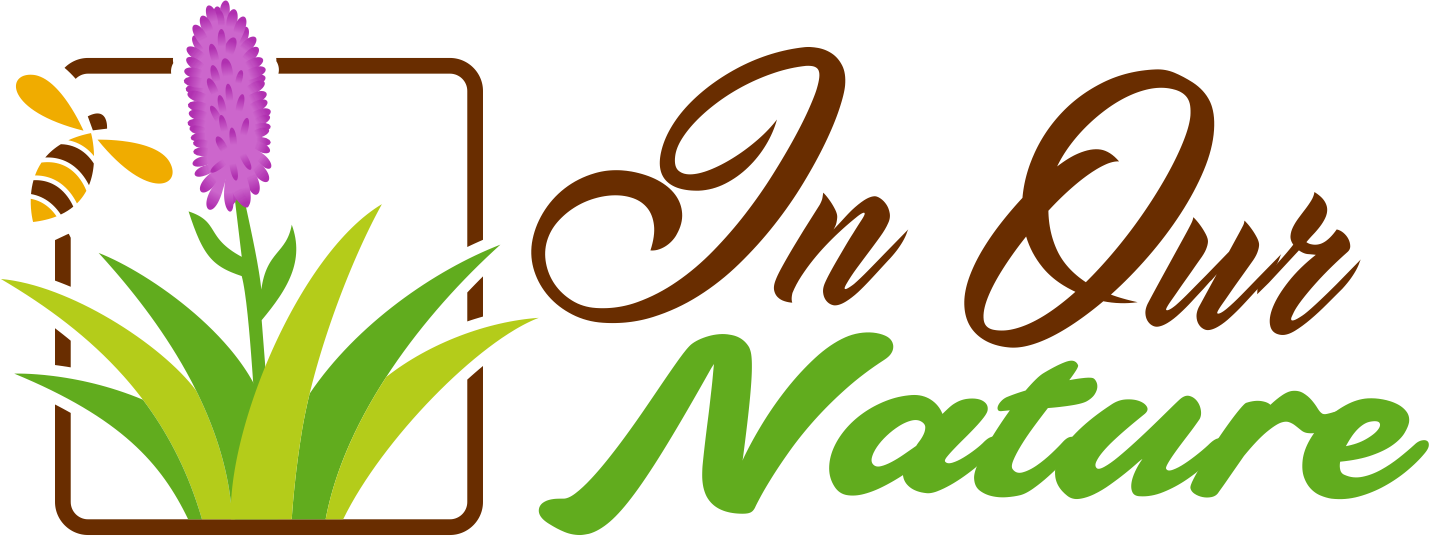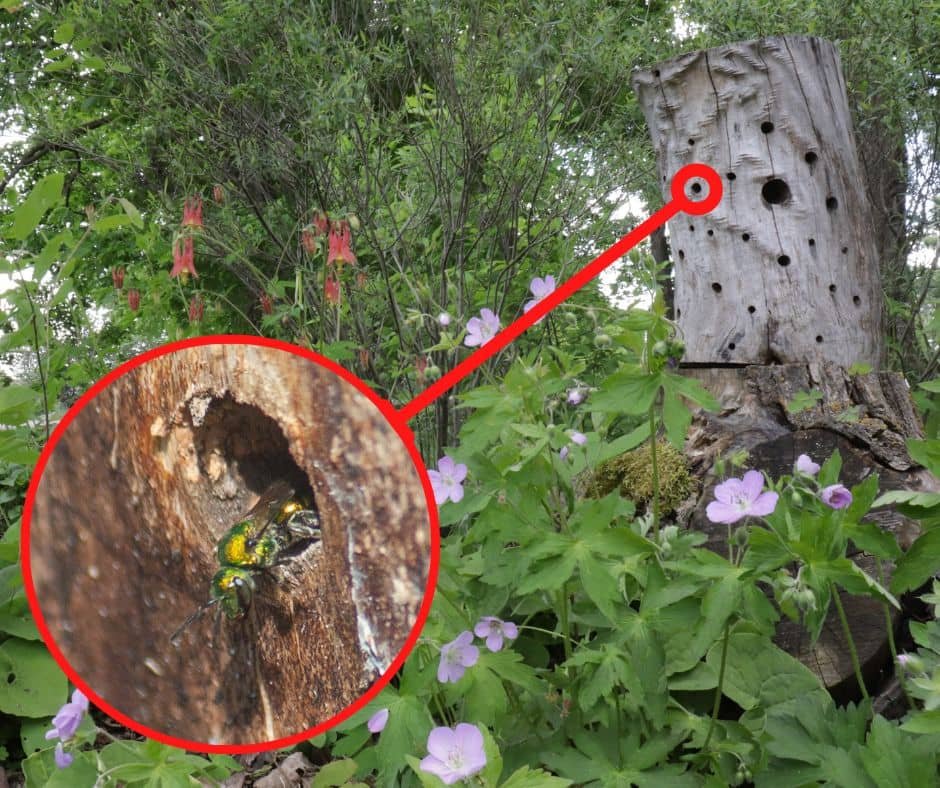Pollinator Garden Design
| Attract native pollinators to your garden with these easy steps |
If you’re looking to make your garden more pollinator-friendly, then you’ve come to the right place. Whether you’re starting a garden from scratch or upgrading an existing one, these easy to implement tips will help transform your yard into a haven for bees, butterflies and other pollinators.
How to Design A Pollinator Friendly Garden
This guide is jam-packed with info, so make sure you read to the end.
1.Choose Native Plants For Your Garden
Native plants are by far the best choice for supporting pollinators.
In fact, according to the Xerces Society, native plants are four times more likely than non-native plants to attract native bees. They also support three times as many butterfly and moth species than non-native plants.
In addition, native plants also provide better nutrition. For example, pollen from a native pussy willow contains about 40% protein, whereas dandelion pollen is only at 14%!
Native plants are the best choice because they are the plants that pollinators evolved with and have adapted to. In fact, some native pollinators will ONLY visit native plants (see tip #7 below).
Sure, many pollinators will visit non-native plants but in reality native plants provide the highest value to your garden and the pollinators that live there.
2. Provide Continuous Blooms
Abundant nectar and pollen sources from early spring to late fall are key to the survival of pollinators.
To provide a continuous food supply, aim to provide at least three different pollinators plants for each season from spring to fall.
You should plan to overlap bloom times so there are always flowers blooming, even as one season transitions into the next.
Flowers that bloom in early spring are especially important for emerging bees such as bumblebee queens, mason bees and mining bees as they emerge from winter.
3. Plant In Big Clumps
Bees are not born knowing where to find food - they have to search for it!
You can help them out by planting in big clumps of the same species.
A good rule of thumb is to plant in clumps of at least 1 meter in diameter of a single species or go as close to that as your garden will allow. This will make your plants more noticeable to pollinators from the air.
Large clumps also mean pollinators don’t have to travel as far to the next plant, thus increasing their efficiency.
If you are planning a pollinator garden in a small space, then it is better to choose fewer species for your site but plant in bigger clumps.
Planting in larger clumps also makes a dramatic visual statement in your garden!
4. Provide Overwintering & Nesting Habitat
Just like us, pollinators need safe places to live. Therefore, pollinator friendly gardens will include habitat structures so pollinators have somewhere to raise their young and hunker down over winter months. Try to include as many of the following habitat structures as possible:
Rock piles - Ground nesting bees and some butterflies will nest/overwinter in rock piles
Brush piles - Piles of sticks, branches and even old Christmas trees can provide shelter for pollinators
Old logs - Cavity nesting bees will use holes in rotten logs to raise their young. You can facilitate this by drilling holes into old logs. Even dead wood that is still attached to a tree will provide habitat.
Rodent burrows - Bumblebees often nest in old chipmunk burrows.
Fallen leaves - Fallen leaves act like blankets for over-wintering wildlife like caterpillars, butterflies and queen bumblebees.
Plants with hollow stems - 30% of native bees nest in cavities such as hollow stems.
Bare Soil - Ground nesting bees will burrow in sparsely vegetated patches of soil, often in between clumps of warm-season grasses.
5. Provide Host Plants
Host plants are often over-looked in favor of showy flowers that attract butterflies. However, if our goal is to support butterflies and moths then we must consider what their caterpillars eat.
Butterflies and moths lay their eggs on, or near, specific plants that their caterpillars can eat. Many insects are highly specialized and are restricted to a certain species or group of plants.
For example, caterpillars of the beloved Monarch butterfly can only eat Milkweed species (Asclepias sp.).
When planning your garden, be sure to first research what butterfly and moth species occur locally and learn what their caterpillars need.
6. Flower Shape And Size Matters
The flowers that pollinators choose to visit are determined by their body size, tongue length and accessibility of nectar/pollen within the flower.
Many pollinators will visit a variety of flower shapes and sizes, however, many will give preference to flower shapes and sizes that best suit them.
For example, butterflies can easily access nectar in long, tubular flowers. However, this flower shape won’t be a great choice for small sweat bees that simply cant reach inside the flower.
Some flowers, such as closed bottle gentian, can only be pollinated by bumblebees as they are the only pollinators strong enough to push past the closed petals.
The best way to ensure all pollinators have something to choose from is to just include as much shape and size diversity as possible.
You’ll want tubular flowers, flat-topped flowers, large flowers, small flowers and everything in between! This approach will also help improve the visual interest of your garden.
7. Plant For The Specialists
Our native bees can be divided into two categories. Specialists and generalists. 80% of them are generalist meaning they can forage on a wide variety of plants and are not too picky.
On the other hand, the other 20% are specialists meaning they will only feed from only one kind of plant, sometimes on two, or at most three kinds. This is not because they are picky but because they have developed specialized behaviors or body parts for specific plants.
Some native bees will only feed on the pollen of asters or only on dogwoods or only on sunflowers. A lot of spring ephemeral flowers like trout lilies have specialist pollinators too!
If we plant for the specialists then the generalists will benefit too because they can feed from a much wider variety.
8. Kill Your Lawn
Lawn is a useful groundcover for humans but unfortunately, it doesn’t benefit pollinators in any way.
If you have areas of lawn that are un-used then consider turning it into pollinator gardens.
An easy way to approach this is to slowly expand your garden beds outwards every year. This helps you reduce lawn without feeling overwhelmed.
Consider some of these native groundcovers to replace your lawn while providing resources for pollinators.
If you are looking for a large-scale, more natural approach then consider converting your lawn into a wildflower meadow.
In Our Nature specializes in replacing lawn with pollinator friendly gardens. Lets get in touch and talk about how we can help you loose the lawn.
Maintain your garden for pollinators
1. Avoid cutting back your garden
Leaving your plants standing over winter is a simple, yet effective, way to provide overwintering habitat for pollinators.
The easiest way to create pollinator habitat is to be a “lazy” gardener and leave your plants standing over winter!
Many butterfly and moth species will spend the winter as a chrysalis or in a cocoon attached to plant stems. They stay dormant through the winter then as the weather warms up in the spring they will then emerge as a butterfly or a moth.
Some smaller butterflies will even overwinter in seed pods while the larvae of native bees will lay dormant through-out the winter months in hollow stems and other cavities.
If we cut back our plants in fall then we are removing their winter shelter. Aim to cut back your garden as little as possible.
If you do decide to cut some of it back, do in the spring when you start seeing the first bees emerging. This is typically when daily temperatures average above 10 degrees Celsius.
When you decide to do your spring clean-up, cut stems back to about 30cm in height. Cavity nesting bees will then use those stems for that years brood. I often the cut stems lying around the garden to create even more pollinator habitat.
2. Remove and replace invasive plants
Invasive plants harm pollinators by reducing their food availability.
Yes, you may see pollinators visiting the flowers of invasive species but this only encourages them to spread into dense monocultures. The monocultures formed by invasive species reduce seasonal food availability for pollinators.
For example, in a monoculture of Asian Honeysuckle, bees will have food for the short time that the Honeysuckle is in bloom but nothing for the rest of the season. This isn’t the type of habitat can can support healthy populations of pollinators.
Check out our guide to choosing native alternatives to invasive plants.
3. Avoid disturbing your soil
70% of native bees, including bumblebees, nest in the ground. They prefer well-drained, south-facing areas with sandy soil.
To create a friendly space for them in your garden, avoid tilling your garden.
You should avoid using thick layers of wood mulch because they can't always dig through it to make their nests.
An alternative to using mulch is to plant your plants closer together. This will smother weed while providing small, bare patches of soil between plants that they can nest in.
Bumble bees will often nest in old rodent burrows so don’t fill these in!
4. Seek alternatives to pesticides
A healthy ecosystem is the only long-term solution to garden pests.
For example, Ahpids are commonly seen as garden pests as they can affect health of plants.
It may be tempting to reach for chemical controls, however pesticides will harm far more than just aphids in your garden. The only effective long-term solution to aphids is to see them with a different attitude. We need to see them not as pests, but as food for natural enemies.
Natural enemies are insects that eat organisms that we generally see as pests (remember, they aren’t pests but rather food for other insects!) such as aphids.
Common natural enemies in healthy gardens include Hoverfly larvae, Ladybug larvae, wasps and lacewings.
It’s also important to understand that plants are meant to be eaten!
Seeing bite marks in your leaves is a good thing because it means your garden s part of the ecosystem.















